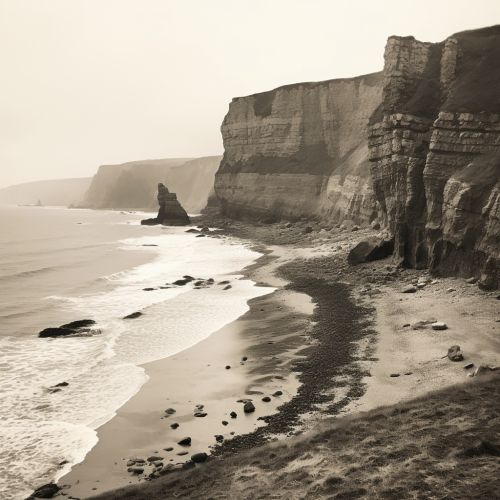The Ecology of Coastal Erosion and Shoreline Management
Introduction
Coastal erosion is a natural process that involves the gradual removal of sediments and rocks along the shoreline by the action of waves, tides, and wind. This process can have significant impacts on the coastal environment, affecting both the physical landscape and the organisms that inhabit it. The management of coastal erosion, therefore, is a critical aspect of coastal ecology, involving a range of strategies and techniques designed to mitigate the effects of erosion and protect the shoreline and its ecosystems.
Coastal Erosion: Processes and Impacts
Coastal erosion is driven by a variety of natural processes, including wave action, tidal currents, wind-driven water movement, and sea-level rise. These forces can act together to erode the shoreline, leading to changes in the shape and composition of the coast. Over time, this can result in the loss of land, damage to infrastructure, and impacts on coastal ecosystems.


Wave Action
The primary driver of coastal erosion is wave action. Waves are generated by wind blowing across the surface of the ocean, and their size and strength are determined by the speed and duration of the wind and the distance over which it blows (the fetch). When waves reach the shore, they can erode the coastline through a process known as wave cutting. This involves the breaking of waves against the base of cliffs or other coastal features, leading to the undercutting and eventual collapse of these structures.
Tidal Currents
Tidal currents, which are caused by the gravitational pull of the moon and the sun, can also contribute to coastal erosion. These currents can transport sediment along the shoreline, a process known as longshore drift. Over time, this can lead to the erosion of some areas of the coast and the deposition of sediment in others, leading to changes in the shape of the shoreline.
Wind-Driven Water Movement
Wind-driven water movement, or wind waves, can also contribute to coastal erosion. These waves can cause the water to move in a circular motion, leading to the transport of sediment along the shoreline. This can result in the erosion of the shoreline and the formation of features such as beach ridges and dunes.
Sea-Level Rise
Sea-level rise, which is primarily caused by climate change, can exacerbate coastal erosion. As sea levels rise, the action of waves and tides can reach further inland, leading to increased erosion of the shoreline. This can result in the loss of land and the displacement of coastal communities and ecosystems.
Shoreline Management: Strategies and Techniques
The management of coastal erosion involves a range of strategies and techniques designed to mitigate the effects of erosion and protect the shoreline and its ecosystems. These strategies can be broadly divided into two categories: hard engineering and soft engineering.


Hard Engineering
Hard engineering strategies involve the construction of physical structures to protect the shoreline from erosion. These can include sea walls, groynes, breakwaters, and revetments. While these structures can be effective in preventing erosion, they can also have negative impacts on the coastal environment, including the disruption of natural processes and the loss of habitats.
Soft Engineering
Soft engineering strategies, on the other hand, aim to work with natural processes to manage coastal erosion. These can include beach nourishment, where sand is added to the beach to replace eroded material, and the creation of managed retreat areas, where land is deliberately allowed to flood in order to create new habitats and buffer zones. These strategies are generally more sustainable and less disruptive to the coastal environment than hard engineering techniques.
Conclusion
Coastal erosion is a complex and dynamic process that can have significant impacts on the coastal environment and its ecosystems. The management of coastal erosion, therefore, is a critical aspect of coastal ecology, requiring a balanced and sustainable approach that takes into account both the need to protect the shoreline and the importance of preserving the natural processes and habitats that make up the coastal environment.
